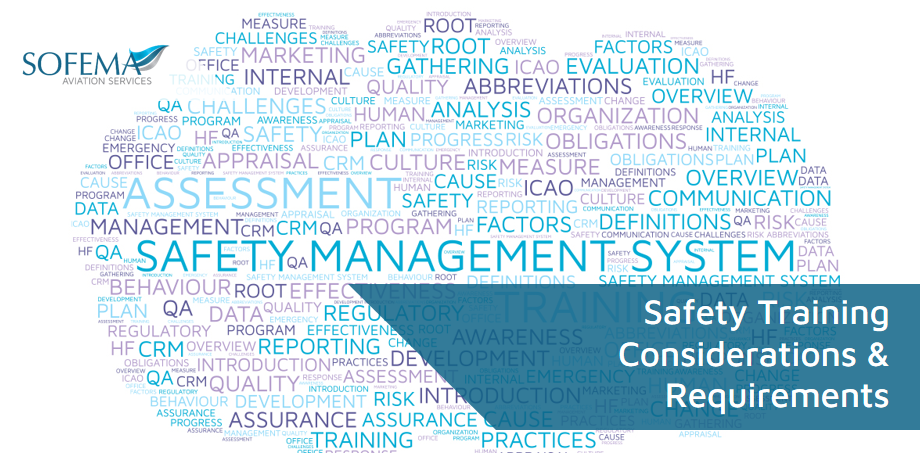Sofema Aviation Services (SAS) www.sassofia.com considers SAFETY TRAINING with regards to ED Decision 2022/021/R
The design management staff, as described in points 21.A.245(a) and (b),
Including but not limited to the following:
The Chief Executive Officer (CEO) – (A statement of the qualifications and experience of the CEO is not required.)
Head of the Design Organisation (HDO)
Chief of the Airworthiness Function
Chief of the Independent Monitoring Function
Safety Manager
When a safety review board is established, the chairperson of that board (If different from the HDO) and
Staff making decisions affecting
- Airworthiness,
- Operational suitability and
- Environmental protection:
Compliance verification engineers
Staff of the Office of Airworthiness making decisions affecting
- Airworthiness,
- Operational suitability and
- Environmental protection
Staff signing documents for
- Release,
- Approving classification of changes and repairs,
- and granting the approval of minor/major changes,
- supplemental type certificates (STCs) and minor/major repairs,
- granting the approval of service bulletins (SBs) and
- minor revisions to the aircraft flight manual)
Should receive initial and recurring safety training as appropriate to their responsibilities, including in
- safety management principles and
- The associated safety objectives,
- To ensure their continued competency.
Note – The organisation should identify the category of other staff to which safety training should be provided and define the initial and recurrent training programmes, including appropriate timelines.
Adequate records of the safety training that is provided should be kept in
accordance with point 21.A.5.
AMC1 21.A.5 (d) & (e) Record-keeping ED Decision 2022/021/R (record of staff involved in design or production)
- The following should be the minimum information to be recorded for each person that exercises the privileges of an organisation that is approved according to Part 21, Subparts G and J, or according to points 21.A.163 or 21.A.263, or that carries out the independent monitoring of compliance and adequacy according to points.
>> 21.A.139(e) and 21.A.239(e), or that carries out the independent verification function of demonstration of compliance pursuant to point 21.A.239(d)(2): name; and date of birth;
- Basic training received and standard attained;
- specific training received and standard attained;
- continuation training received (if appropriate);
SAFETY TRAINING (ED Decision 2022/021/R)
Initial Training
- The main purpose of the safety training programme is:
>> to support safety management policies and processes; and
>> to ensure that personnel at all levels of the organisation develop and maintain their competency to fulfil their safety roles.
- Each organisation may adapt its syllabus to its own needs.
- Typically, depending on the targeted staff, to contribute to a positive safety culture, the following items may be included:
>> The organisational roles and responsibilities related to safety, including the hazard identification and risk management processes;
>> The safety objectives and the associated safety performance indicators;
>> human factors (HF) principles, including human performance (HP) and limitations;
>> legislation, where applicable;
>> safety reporting systems and investigations; and
>> Safety issues.
Recurrent Training
The purpose of the recurrent safety training is:
- Primarily to ensure that staff are kept abreast notably of changes to safety management system (SMS) principles, processes, and procedures and
- Also, to share feedback on safety issues that are relevant to the organisation or lessons learned.
The training staff should have sufficient knowledge and experience to teach the topics at the required level and the skills to influence attitudes and behaviours.
Next Steps
Follow this link to our Library to find & download related documents for Free.
Visit Sofema Aviation Services (SAS) and Sofema Online (SOL) for Classroom, Webinar and Online Training; for additional comments or questions, please email team@sassofia.com.
Tags:
Safety Manager, Airworthiness, Safety Training, Requirements, SAS blogs, Environmental Protection, Safety Training Considerations, ED Decision, ED Decision 2022/021/R, Chief Executive Officer (CEO), Head of the Design Organisation (HDO), Chief of the Airworthiness Function, Chief of the Independent Monitoring Function, Operational suitability





